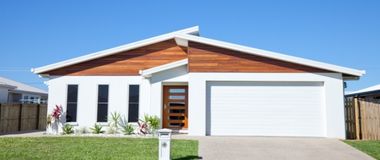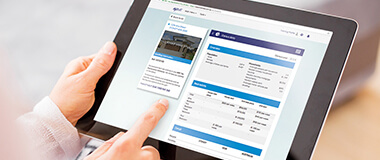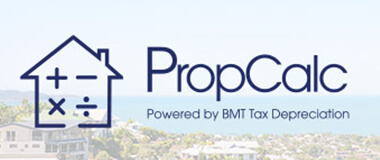Rentvesting tax benefits: The rentvesting revolution

First published 23 April 2025
As Australian property prices remain volatile, many individuals are adopting 'rentvesting' as a more accessible path to entering the property market. This strategy allows property investors to rent a home in a preferred location that aligns with their chosen lifestyle, while simultaneously investing in property in more affordable or strategic high-growth areas. This strategy offers lifestyle flexibility while enabling long-term wealth creation through capital growth, rental income and tax advantages.
Throughout this article we will analyse the pros and cons as well as explain the rentvesting tax benefits which can help reduce taxable income and enhance cash flow.
Pros and cons of rentvesting
Table 1. Pros and cons of rentvesting
| Pros | Cons |
| Lifestyle flexibility: Live in preferred locations without the financial commitment of ownership | No first homeowner grants: Renting your primary residence may disqualify you from certain government incentives |
| Investment diversification: Opportunity to invest in high-growth areas that may be more affordable | Capital Gains Tax (CGT): Investment properties are subject to CGT if you sell |
| Equity growth: Build wealth through capital appreciation | Market risks: Exposure to fluctuations in property market values and rental demand |
| Tax advantages: Potential to claim various tax deductions related to the investment property | Management burden: Tenant issues, vacancies, repairs and maintenance responsibilities |
Rentvesting tax benefits
Interest on loans: Rentvestors can claim deductions on the interest paid for loans taken out to purchase their investment properties. This is often one of the largest tax deductions available to property investors, reducing their taxable income and improving cash flow.
Property management fees: The costs associated with hiring property managers to oversee the day-to-day operations of rental properties are tax deductible. These costs include fees for advertising the property, finding tenants, and managing lease agreements, all of which help simplify the investment process.
Council rates and land taxes: Rentvestors can claim tax deductions for recurring property-related taxes, such as council rates and land taxes. These are ongoing costs that come with owning an investment property and can be used to offset taxable income.
Repairs and maintenance: Any expenses related to maintaining the property in a rentable condition are tax deductible. This can include repairs to the structure, plumbing or electrical systems, as well as general upkeep like painting or replacing worn-out fixtures. However, improvements or renovations that enhance the property's value are considered capital improvements and may not be deductible as repairs but can be claimed as property tax depreciation.
Property tax depreciation: One of the most valuable rentvesting tax benefits is property depreciation. This non-cash deduction reflects the wear and tear on the property and its assets over time, including both the building structure and removable items like appliances, carpets, and furniture. Depreciation allows rentvestors to claim substantial deductions without having to spend money out-of-pocket, significantly reducing their tax liabilities in the process.
Emphasising depreciation as one of the major rentvesting tax benefits
According to the latest ATO data, depreciation is the second-largest tax deduction available to property investors, right after interest.
In the last financial year, BMT Tax Depreciation helped clients secure an average of over $11,000 in depreciation deductions during their first full financial year, resulting in significant cash flow improvements. This non-cash deduction can be claimed for the natural wear and tear of an income-producing building and its assets over time.
Depreciation deductions are categorised under two divisions of the Income Tax Assessment Act 1997:
Division 40 (Plant and equipment depreciation) refers to easily removable assets or assets that are mechanical in nature, such as appliances, carpets, and furniture. These items have a limited effective life and can be depreciated over time.
Division 43 (Capital works deductions) refers to the structural elements of the property, including walls, roofs, and fixed assets like built-in cupboards. Investors can claim a deduction of 2.5% per year over 40 years on construction costs for properties built after 15 September 1987.
Table 2. Cash flow on a new $950,000 townhouse rented out at $920 per week before and after depreciation.
| Townhouse rented out at $920 per week | Without depreciation | With depreciation |
| Pre-tax cash flow | ||
| Annual rental income | $47,840 | $47,840 |
| Annual property expenses | $62,200 | $62,200 |
| Total taxable income(income less expenses) | -$14,360 | -$14,360 |
| Depreciation claim | $0 | $16,800 |
| Total taxable income (income less expenses) | -$14,360 | -$31,160 |
| Post-tax cash flow | ||
| Tax refund (taxable income x 37% tax rate | $5,313 | $11,529 |
| Net cash flow (annual) | -$9,047 | -$2,831 |
| Net cash flow (weekly) | -$174 | -$54 |
| Difference of $120 per week or $6,216 per annum | ||
The bottom line
Rentvesting offers a strategic way to enter the property market and build wealth without sacrificing lifestyle. By leveraging key rentvesting tax benefits, rentvestors can significantly reduce their taxable income and enhance cash flow. Among these, depreciation stands out as a powerful non-cash tax deduction, which helps to optimise cash flow.
To ensure you’re claiming every possible rentvesting tax benefit, speak with a BMT Tax Depreciation specialist. We’ll help you unlock your property’s full potential and improve your financial outcomes. For more information contact BMT Tax Depreciation
on 1300 728 726 or Request a Quote.
Connect with us
Stay up to date
Subscribe to receive the latest
BMT news and announcements.





